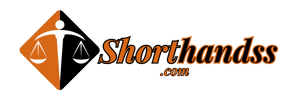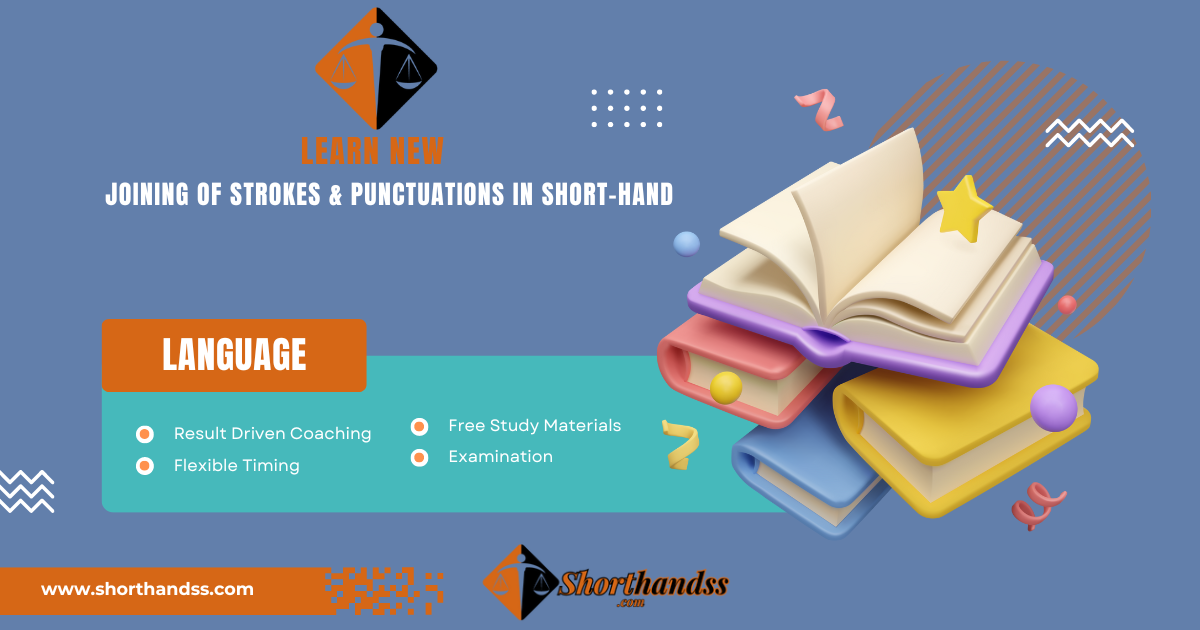Joining of Strokes in Short-Hand Language: there are 24 consonants in English Shorthand. These are joined without lifting the pencil as general English writing in a long hand. Moreover, in Shorthand writing, you will have to start the second stroke where the first stroke ends. More so, always write the stroke in its proper position. It should be in your mind that the first down or upstroke will rest on the line. Always place the vowel sign after writing down the stroke. The following are the strokes that are joined with each other.
Short Vowel “e” of Short-Hand
The short Vowel “e” is the second-place vowel and you will have to place it in the second position of the stroke. In the second place, the stroke will also rest on the line. Represent the short Vowels “e” by a light dot (.), and it is also the vowel of the second position of the stroke. When we write any words in which two stroke is shown then we write the first stroke on the line and the second stroke will be attached to it. In long vowels, we hear long sound vowels and in short vowels, we hear short sound vowels, For example.
Short Forms in English Short-Hand
In daily life, we use lots of shorts form such as the UK for the United Kingdom, the US for the United States, and PK for Pakistan. In shorthand, a few very frequently used words, such as be, it, the, and to are expressed in shorthand by a single sign. These Short-Forms promote speedy writing and memorize the same throughout. Shorts form provide lots of writing speed for its leaner, For example.
Short forms are a straightforward method for increasing writing speed. As shown above, a simple stroke of be is used for “be”. T is used for “it”, D stroke is used for “do” etc. The single dot will represent “the”. For a better experience, students must write three minimum of three pages of short forms.
Punctuations
The following special punctuation marks are used in shorthand. These special punctuations we discuss below.
- Full Stop
- Question Mark
- Exclamation Sign
- Hyphen
- Dash
- Parenthesis
Full Stop
When we start any sentence in writing and where it ends, we use a full stop. A full stop is mandatory because this full stop indicates that a sentence is ending here and another sentence will start from here. Putting this full stop means that we are ending our talk and starting again in the next sentence. Adding a full stop adds beauty to our graphs, making the writing appear neat and each point distinct. A full stop is used with a small cross in shorthand because the dot is used for “The” in shorthand.
Question Mark in Short-Hand
Placing a question mark means that when we ask someone a question or ask something, We put a question mark at the end of the sentence. So that the viewer understands what it means. If what is being done, he should give its answer. Therefore, we should not forget to put a question mark in the last whenever we make a question about someone. Question mark used in shorthand where is dot placed on this small cross.
Exclamation Sign or Point
The exclamation sign is called the exclamation point. Exclamation sign we use. When we give someone our strong emotions or a statement as a surprise. We use an exclamation sign to mention it. By using the explanation sign. We are making the statement. It is because of the sign that it is understood that it is directly directed towards me. Exclamation points used in shorthand only change one thing place of dot put a small cross.
Hyphen
Hyphen we use the equation of any two things as equals. Like we use it in counting two multiplied by two is equal to four. By applying the sign of this hyphen. We know that we are equating this element or this point to another point. Hyphen in shorthand same way to use this.
Dash
We use the basic dash in many places. When we have to mention a space between two words, we use a dash between them. Two words are written close together and a dash is used to indicate a space between them. Whenever we use this dash in shorthand, we will put small ticks on both sides from the beginning and end. So that we know for what purpose we have used this dash.
The purpose of joining the small ticks at the beginning and end of this dash is that. The simple dash is used for the “k” stroke in our shorthand. And to avoid this confusion we use this dash for space. So small ticks are placed at the beginning and end.
Parenthesis of Short-Hand
Parenthesis is used when we put parenthesis at the beginning and end of a word. A special name to highlight or mention it. And the way to use these parentheses in shorthand is that. Whenever we put parenthesis at the beginning and end of a word. Cross these two parentheses with small ticks in the middle, so that it is easy for us to understand. Because short Simple parenthesis is used for another word in shorthand to avoid confusion, we do this process.
Note:
Apart from this, all other punctuation will be used in the shorthand. The same way as we use them in English in the longhand.
For shorthand-related jobs:-

